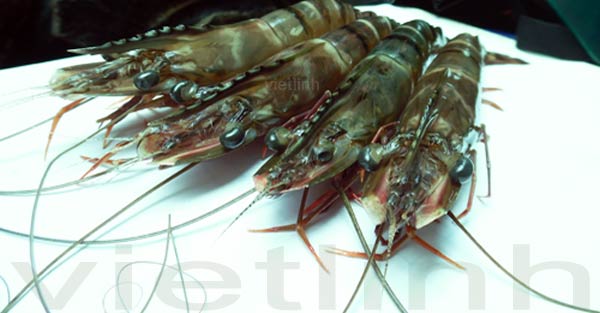
In many cases, the sizes of black tiger prawn as well as whiteleg shrimp don’t grow at the end of the first farming month to the beginning of the second month. This issue makes shrimp farmers concerned and causes difficulties in farming.
There are many reasons why shrimp don’t grow, or grow slowly such as breed quality, diseases, farming environment, and care.
Specifically, these are some of the main reasons for consideration:
1- Poor quality of breeds; heterogeneous breeds:
In this case, due to poor quality, shrimp breeds develop unevenly at different stages and potentially stop growing.
Therefore, when selecting shrimp post-larvae, it is necessary to choose reputable producers and check for certification of disease-free shrimp as well as shrimp quality.
2- Shrimp stunted due to MBV and EHP diseases:
These diseases cause shrimp to grow slowly with signs of lethargic swimming, poor ability to prey, heavier and scattered deaths in a short time. Farming will be inefficient, and farmers potentially face loss.
3- Shrimp has intestinal diseases or white feces disease:
Commonly after 30 days of age, shrimp suffer from reduced appetite, slow growth, poor ability to absorb nutrients. These diseases make shrimp weak and die.
4- Shrimp farming with high density but not meeting the technical requirements:
The supply of feed and nutrients is not adequate for high-density farming. Shrimp will not follow their colony and grow slowly. It is also difficult for shrimp to peel and farmers to take care of them in this case.
5- Unsuitable or unguaranteed feed:
Malnourished shrimp is prone to soft shell and curved body. Shrimp infected with diseases are especially difficult to recover and grow slowly due to low-quality feed.
6- Quality of pond environment, including water quality and pond bottoms:
When diseases are not a factor causing slow growth in shrimp, the main reason can be due to low-quality pond environment. Especially during weather transitions, which easily affects pond bottoms, check for the possibility of lack of oxygen dissolve.
7- Using antibiotics inappropriately:
Overuse antibiotics, using antibiotics arbitrarily, or not using the right dose or right medicine will reduce the ability to absorb in shrimp and cause slow growth.
Therefore, according to Viet Linh, depending on each specific cause of slow growth in shrimp, farmers must have timely measures.
Experience shows that good treatment of pond bottoms, secured water sources, safe farming areas, and selected high-quality breeds can help avoid slow growth in shrimp. Along with that, farmers also need to know how to manage good water quality, clean pond bottom, minimize pathogens that have the opportunity to penetrate into ponds, and choose reputable shrimp feed to prevent stunting.
© 2019 Viet Linh
- Preventing microsporidiosis and EHP in shrimp
- Diseases caused by Vibrio bacteria
- Shrimp farming experience: Disease prevention or treatment?
- Tags: slow growth, water, pond environment, antibiotics, breed, MBV, EHP; disease; shrimp; shrimp farming